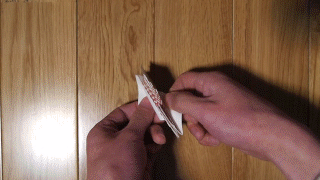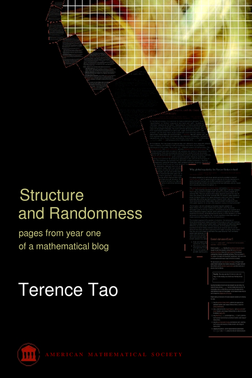|
I'm honored to serve as the undergraduate representative on MIT's Task Force on Open Access. Some have asked me, "what is open access?" Among many things, Open Access (OA) aims to make research free to access, distribute and build on top of. One might call it a "Creative Commons or Free Software movement for research." This post gives a brief overview, but I'd be excited to answer your questions about anything OA! Why don't we already have OA? Mainly because the majority of scholarly peer-reviewed articles are published in academic journals, ~75% of which with charge steep subscription fees (i.e. "toll access") [1]. In 2016 the MIT Libraries paid over $6 million to give MIT affiliates free access to some subset of journal articles [2]. Is journal pricing "fair"? Some facts: The research community submits articles, peer-reviews them and serves on editorial boards, all for no pay from publishers, with university salaries from mostly public funding. Toll-access journals do copy-editing, formatting, marketing etc, but make disproportionate profits: Publishing giant Elsevier reported a profit margin of 36%, more than Google, Amazon or ExxonMobil [1,3]. Most subscription revenue comes from publicly-funded university libraries, whose budgets grow much slower than subscription costs. Small universities and research institutions, especially those from developing countries, are most vulnerable. Is OA only for journals? No, it can cover research datasets, course materials (like MIT OCW), digitized print work, source code, images and much more. For example, the Open Science Framework aims to make transparent and provide OA to every aspect of the research cycle. Science and humanities face similar issues in OA. OA can include all forms of content like novels, movies, software etc, but it's focusing on research because researchers want to distribute their results for free. How does this affect me? Besides ensuring your current and future access to scholarly publishing, access to the fruits of research should be expanded beyond the elite institutions that can barely afford the steep journal subscription fees, to developing countries, to precollege classrooms, and to non-researchers such as journalists and policymakers. That would be more equitable, and would accelerate innovation in science and the humanities. How can I help? I welcome you to learn more about OA by reading or attending conferences, and contribute to OA projects like the aforementioned Open Science Framework and Right to Research, or even organize an open access hackathon! Where can I learn more about OA? Jean-Claude Guédon's article "Open Access: Toward an Internet of the Mind" introduces the history, landscape and nuances of OA quite well. If it seems long, just read the bullet-pointed history starting from page 8 to see how we got here. Sources
0 Comments
Origami? Folding bits of paper? You mean that children's pastime? It can't possibly be of any "real" use, right? What if I told you that origami has been applied in space technology?
The 6th International Meeting on Origami in Science, Mathematics and Education (6OSME) was held in Tokyo University in August to help origami researchers, artists and educators share their ideas on the connections between origami and a wide range of other fields, including applications in theory and industry.
[1.5] Ultrafilters, non-standard analysis, and epsilon managementIn the previous article we saw that fruitful analogies between finitary and infinitary mathematics can allow the techniques of one to shed light on the other. Here we borrow the power of infinitary math—in particular, ultrafilters and non-standard analysis—to simplify proofs of finitary statements.
Part 3 of a six-part series of summaries and adaptations from Terence Tao's book "Structure and Randomness". [1.9] Amplification, arbitrage, and the tensor power trickGiven an inequality $f(x) \leq g(x)$ with imbalances in symmetry between the left-hand side (LHS) and right-hand side (RHS), amplification is a mathematical trick that can exploit that imbalance to derive a stronger inequality (i.e. the LHS and RHS are closer). As for why mathematicians might need such a technique, see "Why do we need strong inequalities?" below.
Consider some transformations $T$ that change $x$ such that $g$, but not $f$, is "symmetric" relative to $T$. That is, $f(T(x)) \leq g(T(x)) = g(x)$. Then we can choose $T$ to maximize the LHS $f(T(x))$ and "tighten" the inequality. Let's illustrate this trick by applying it to prove the Cauchy-Schwarz Inequality (actually, the special case of the familiar $n$-dimensional space $\mathbb{R}^n$): $$\lvert\mathbf{v} \cdot \mathbf{w}\rvert \leq \lVert\mathbf{v}\rVert\lVert\mathbf{w}\rVert \text{ for all } \mathbf{v}, \mathbf{w} \in \mathbb{R}^n \tag{3.1}$$
Is it possible to do mathematics WITHOUT background knowledge?... Is it humanly possible to do mathematics on own without research or is the information content too much to discover identities, or methods of proofs on one's own?... But, how to get started then? How to discover mathematics on my own? I wouldn't say that I've been "discovering mathematics", but I definitely have been playing around with many of my original math research ideas, some of which I am happy with. So I introspected a little about my amateur math explorations and how my experience can help people who ask this question. Here is my slightly edited response.
I was proud of this idea, as it was probably the best early research idea I've come up with.
I became very interested in matrices and linear algebra after reading a paper on modelling origami using rotation and translation matrices (Belcastro and Hull, 2012). I began to play with expressing all kinds of things as matrices and seeing what "meanings" matrix operations had in those contexts. Somehow complex numbers cropped up, and I decided that they were a good candidate for this "interpretation" because multiplying by a complex number meant a rotation and dilation of the complex plane - or an "amplitwist" (Needham, 1996). So I represented a complex number as a rotation matrix together with a scaling factor. Given a complex number $z = r\mathrm{e}^{\mathrm{i}\theta}$, let $\mathbf{Z} = r\begin{bmatrix}\cos\theta&-\sin\theta\\\sin\theta&\cos\theta\end{bmatrix}.$ Some interesting properties follow immediately from this correspondence: Another old idea. Given a $2 \times 2$ matrix $\mathbf{A}$,
$$\det(\mathbf{A}) = \begin{bmatrix}1&0\end{bmatrix}\mathbf{A}^T\begin{bmatrix}0&1\\-1&0\end{bmatrix}\mathbf{A}\begin{bmatrix}0\\1\end{bmatrix}.$$ Prove this and extend it to general $n \times n$ matrices. Can you go further than that? |
Archives
December 2020
Categories
All
|




 RSS Feed
RSS Feed